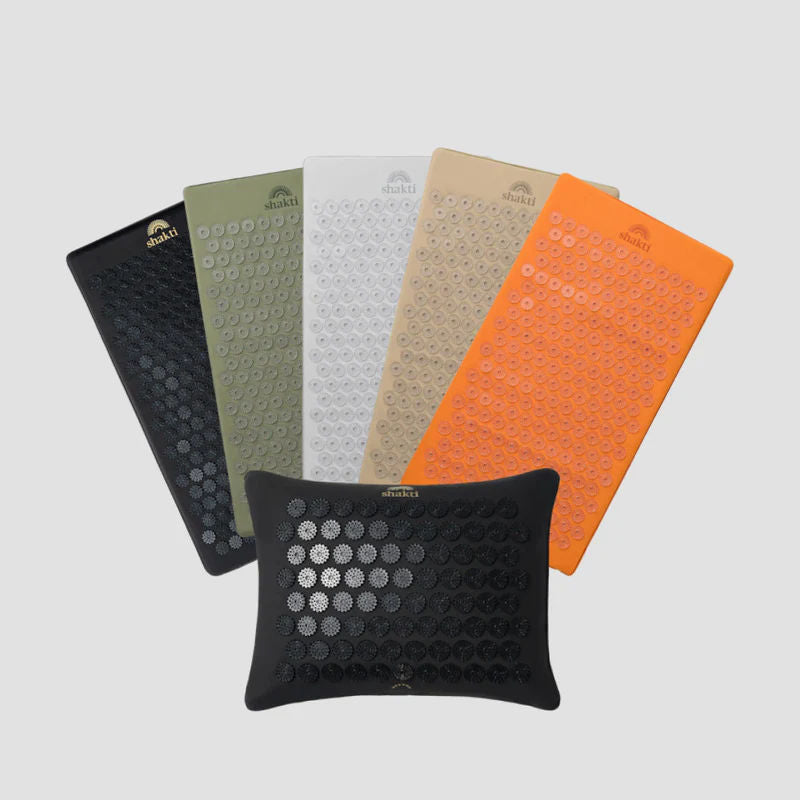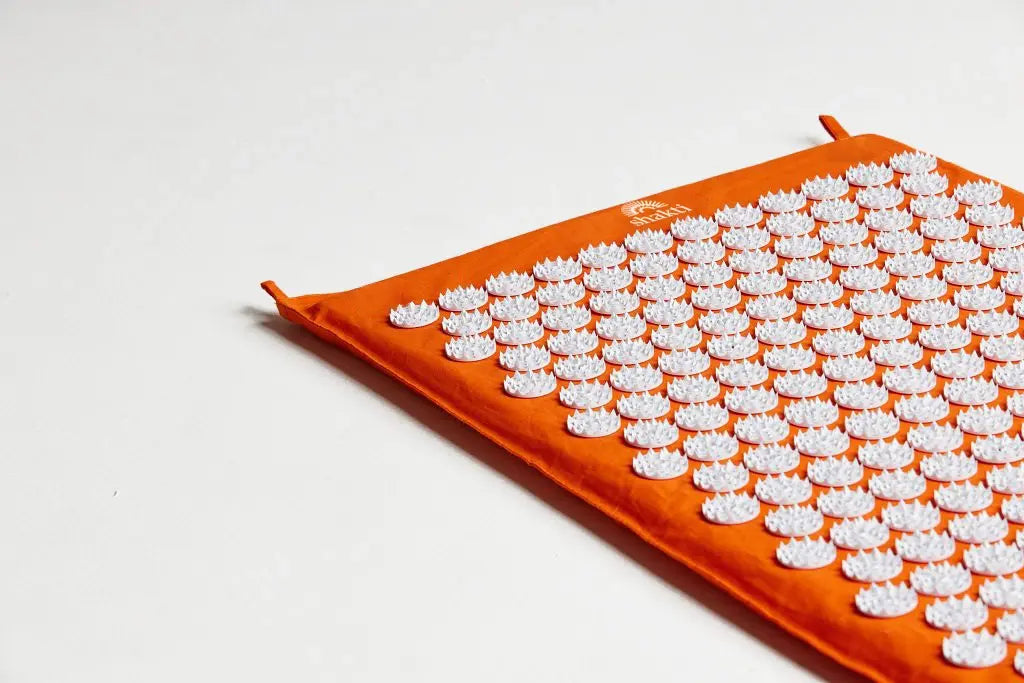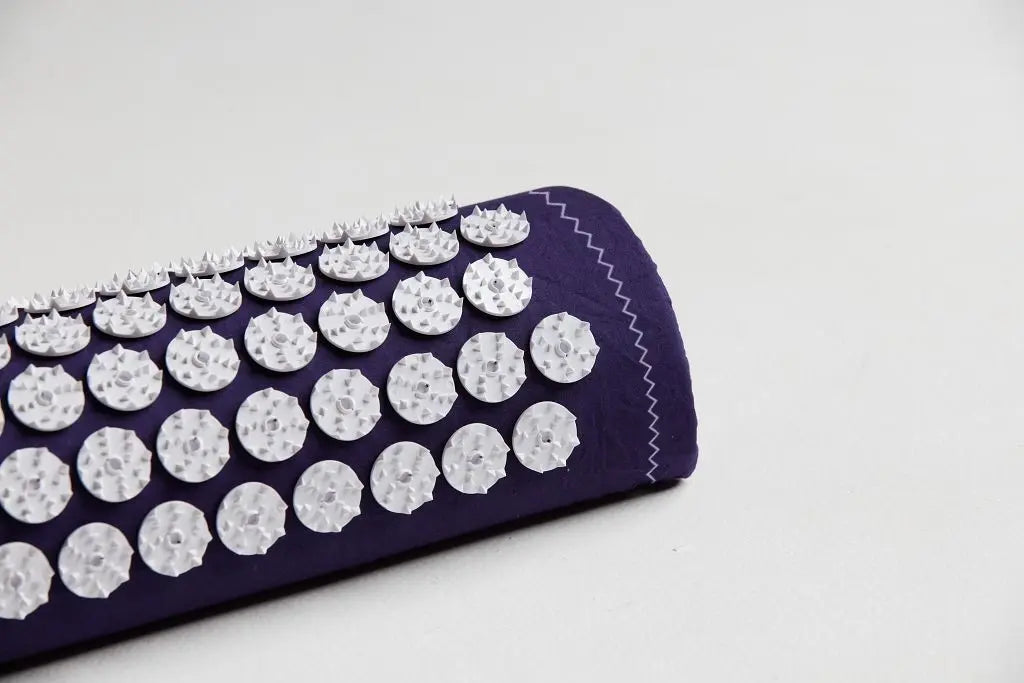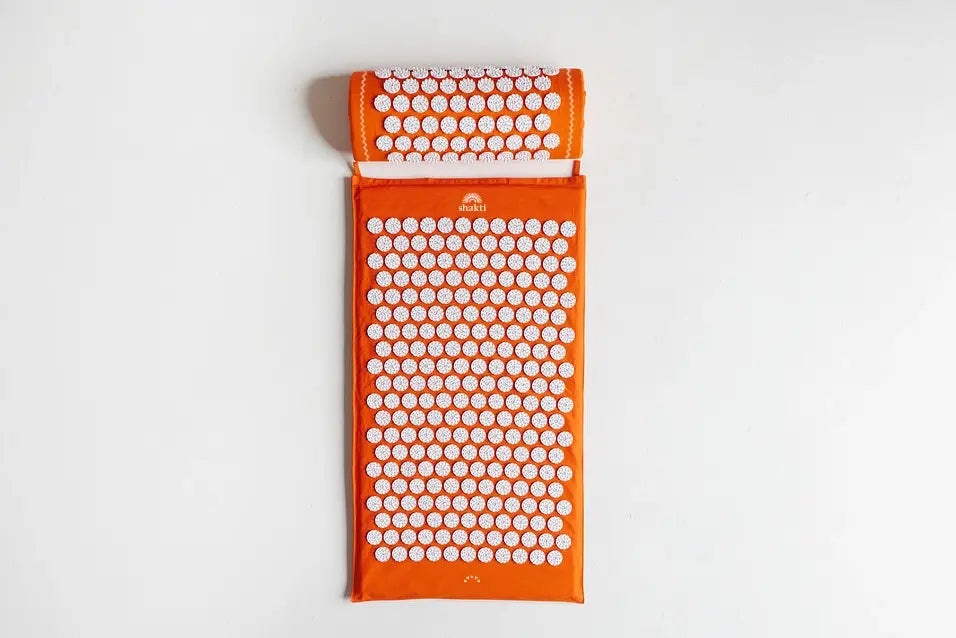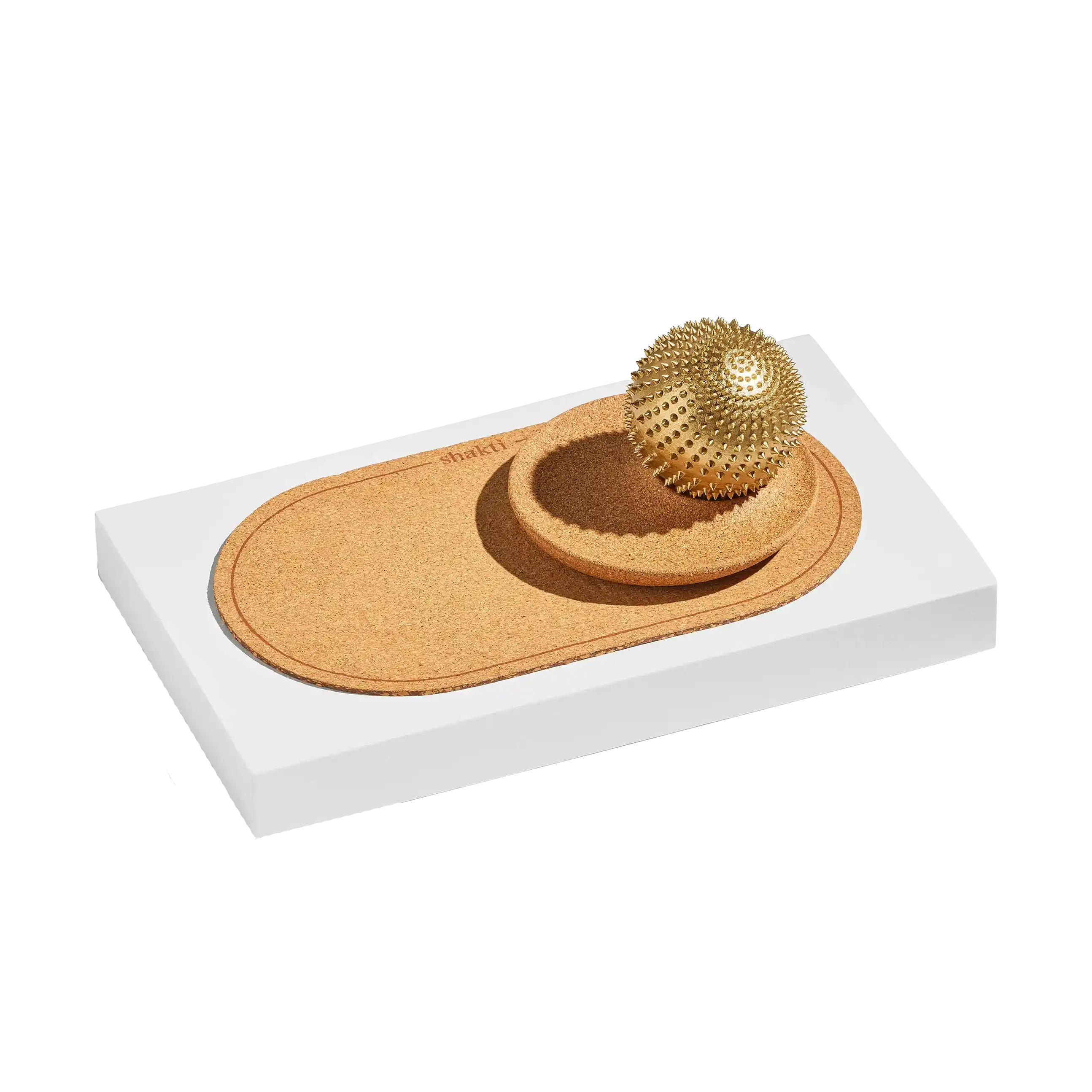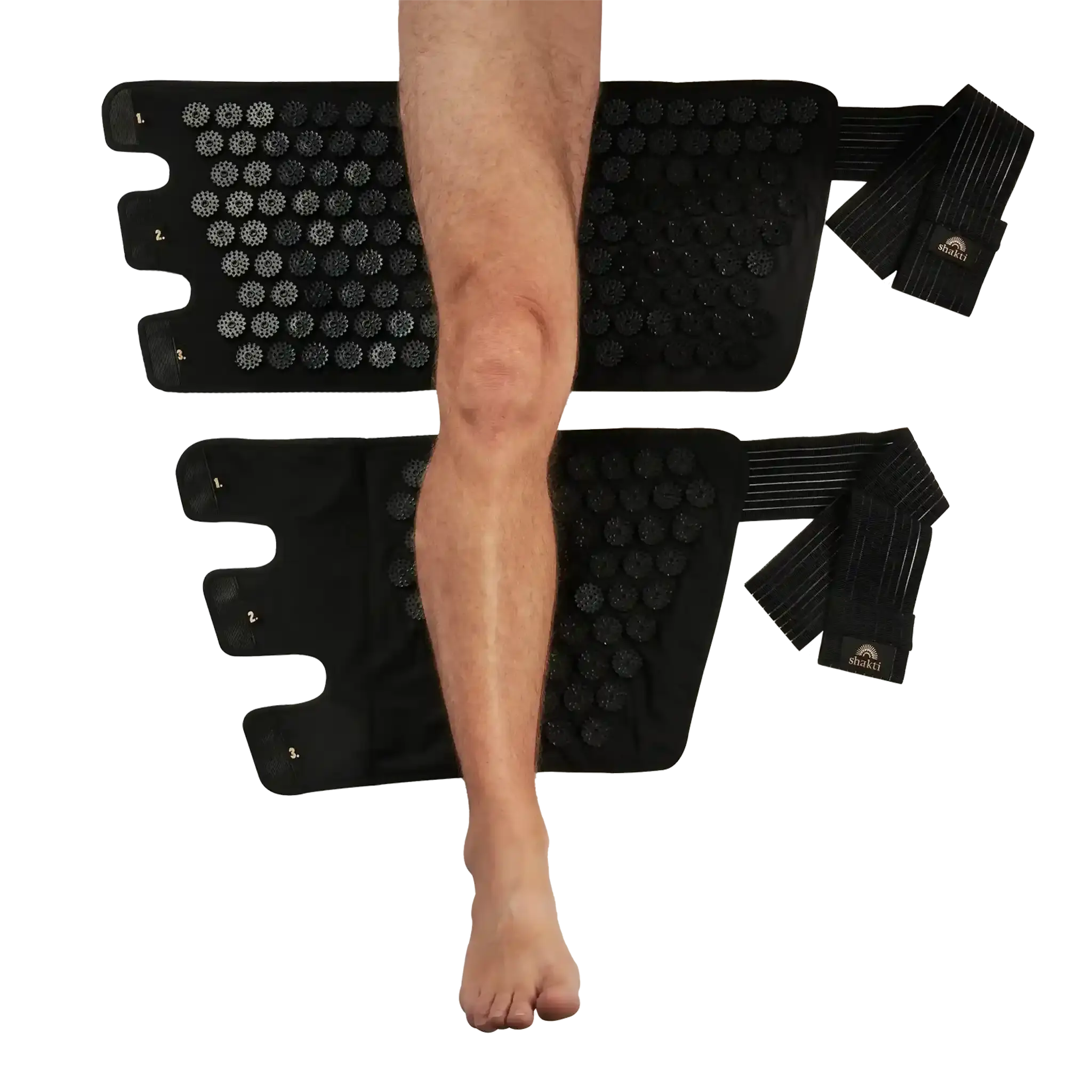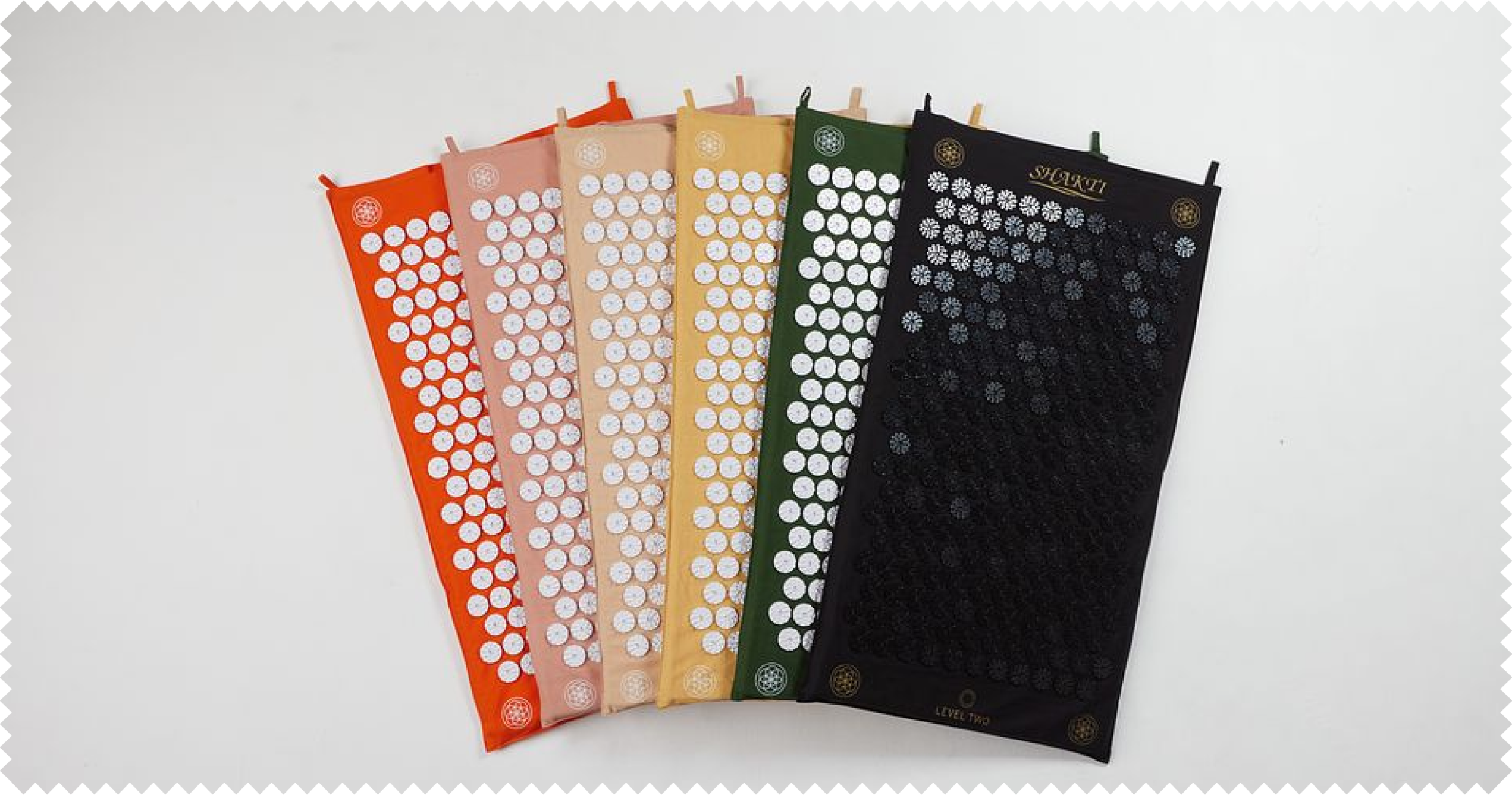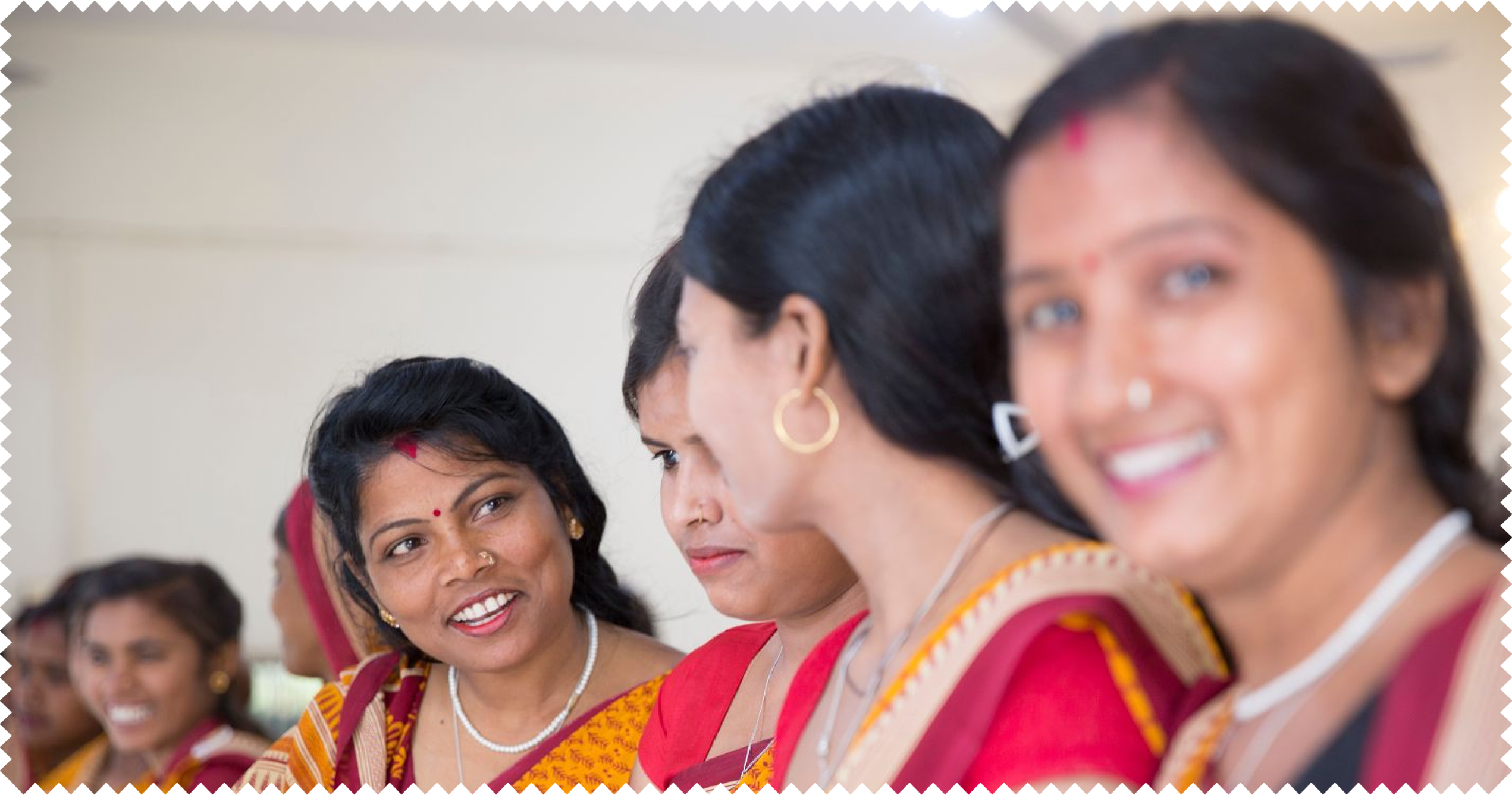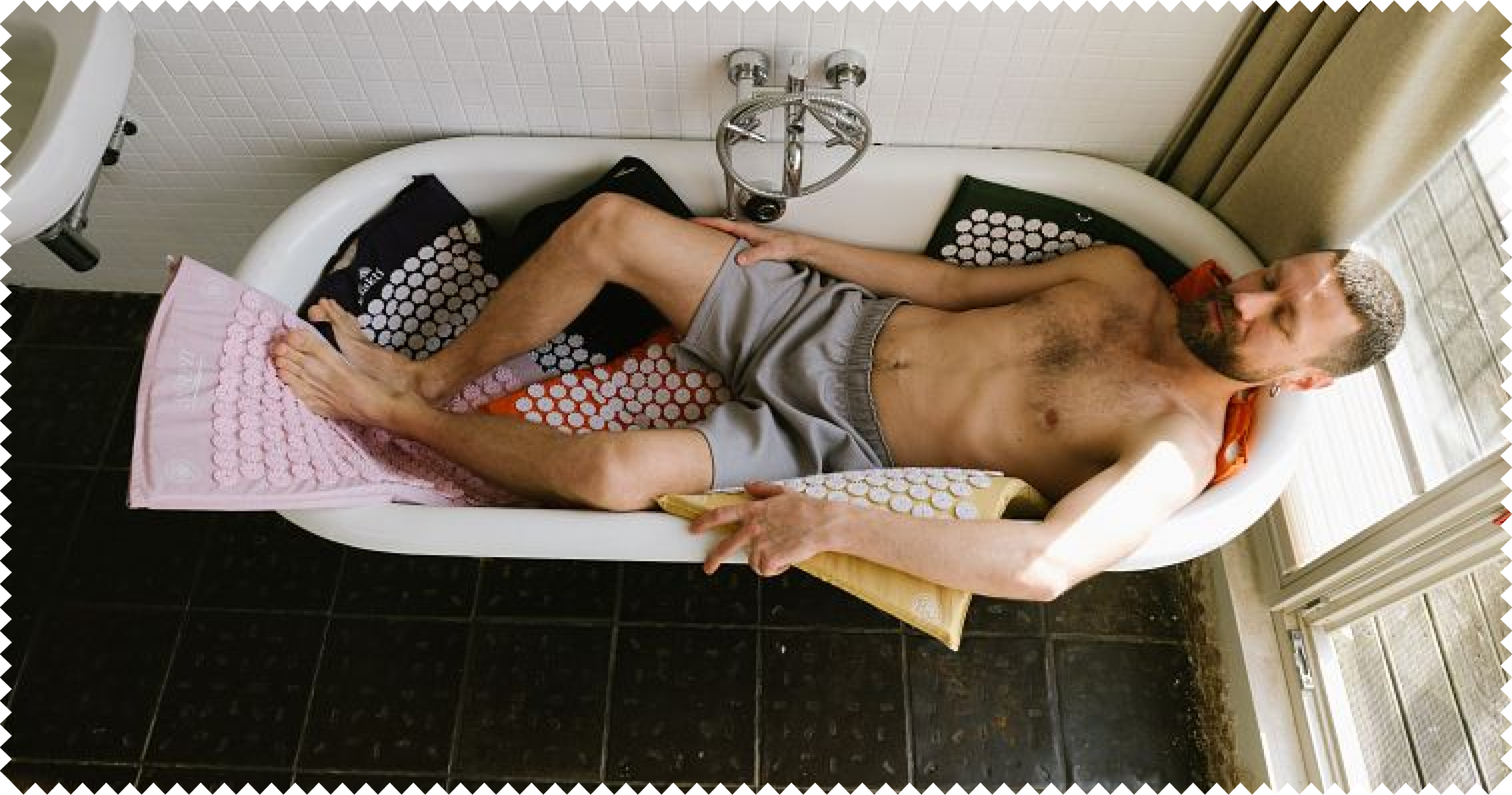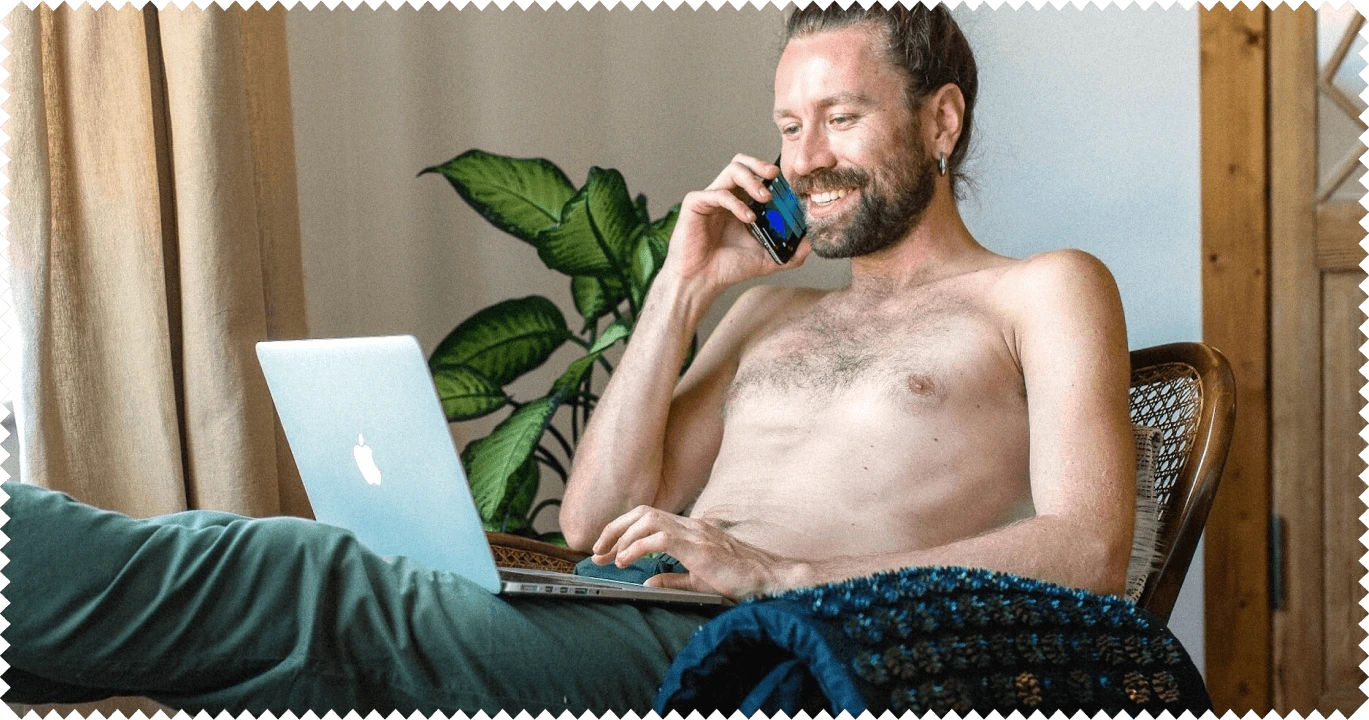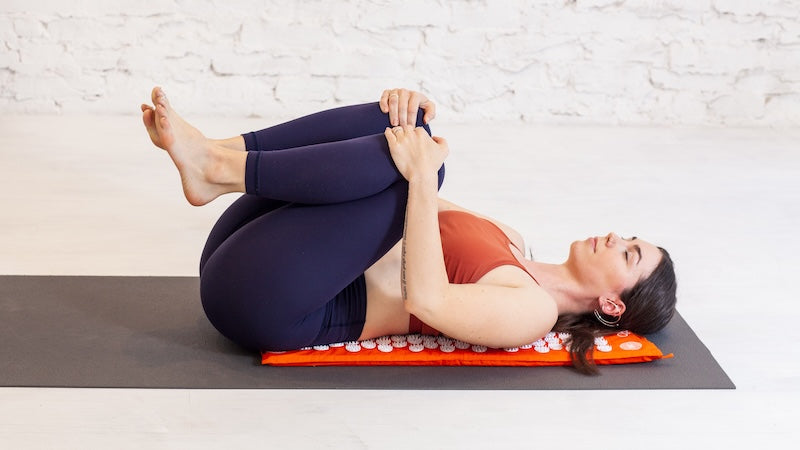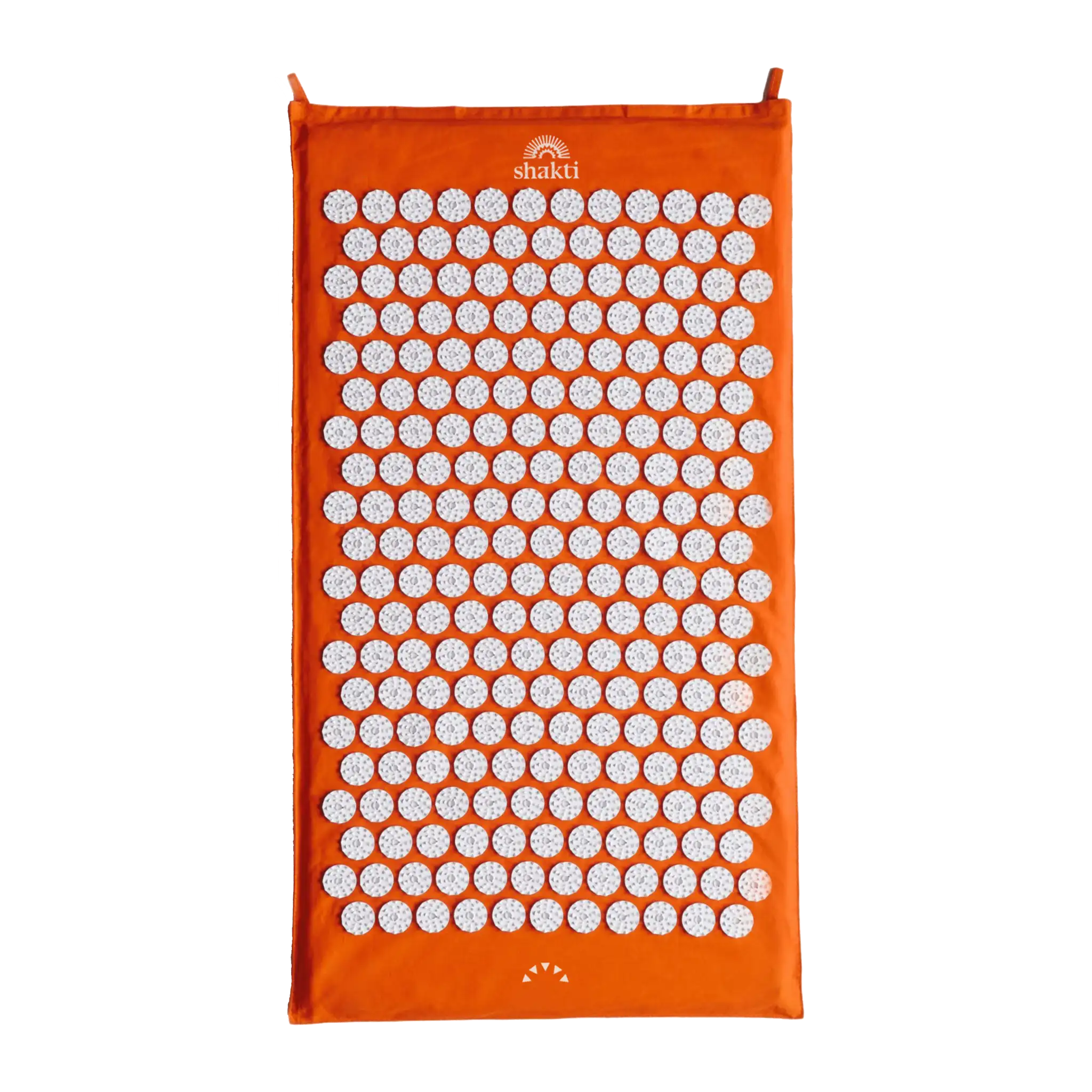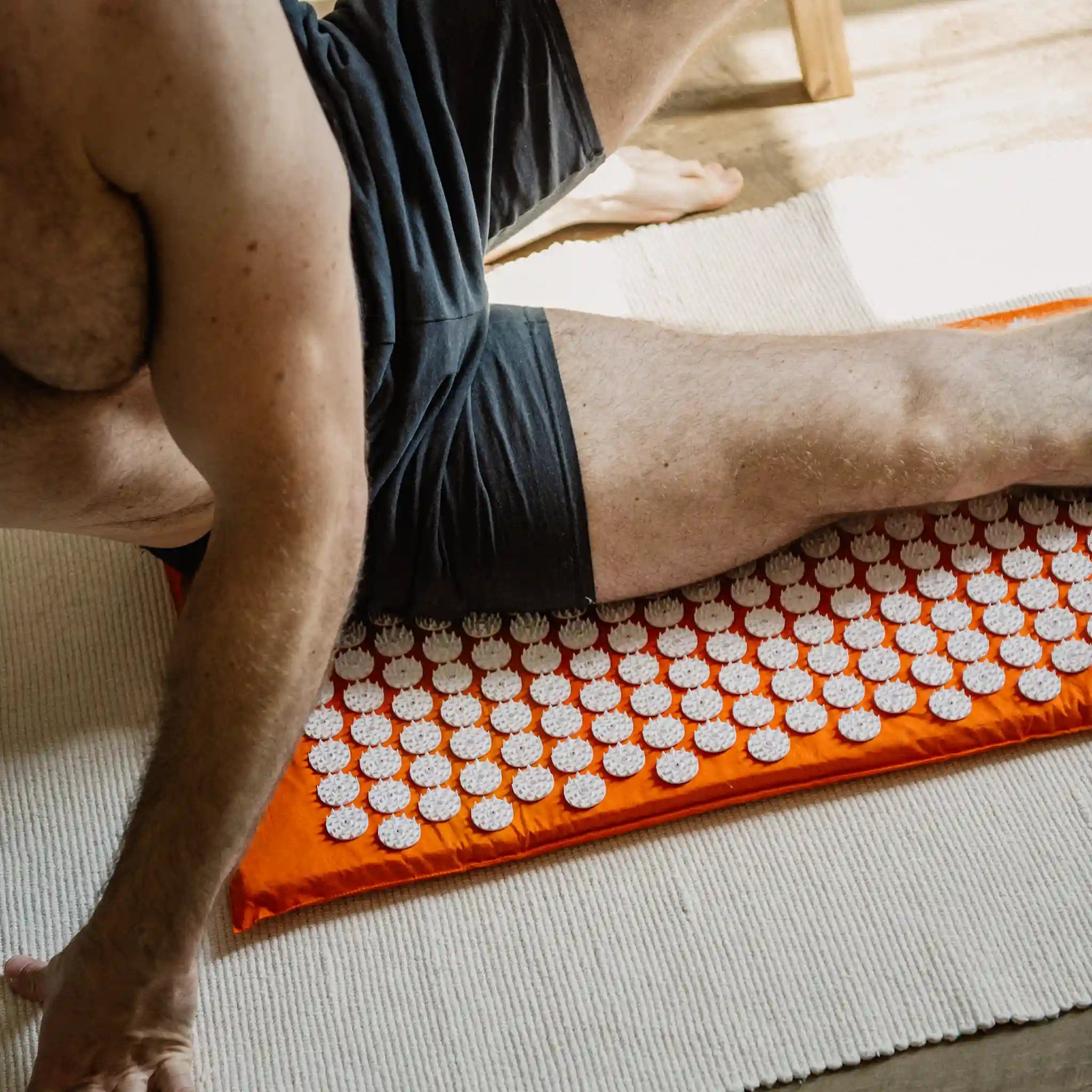Ob Rennen, Gehen oder einfach nur Aufstehen: Fast bei jeder alltäglichen Bewegung sind die Knie involviert. Umso stärker beeinträchtigt es die Lebensqualität, wenn Schmerzen in der Kniekehle auftreten.
Du kennst das Gefühl, dass jeder Schritt Überwindung kostet und du dich am liebsten gar nicht mehr bewegen möchtest, weil es in der Kniekehle zieht und drückt?
In unserem (Schmerz-)Ratgeber klären wir dich über die potenziellen Ursachen von Schmerzen in der Kniekehle auf und stellen dir praktische Behandlungsmöglichkeiten vor, damit du wieder unbeschwert und voller Energie durch den Tag gehst.
Inhalt
1. Unser Knie – Anatomie und Funktion
2. Symptome und Ursachen von Schmerzen in der Kniekehle
3. Kniekehlenschmerzen richtig deuten
4. Behandlung von Kniekehlenschmerzen
5. Schmerzen in der Kniekehle selbst lindern?
6. Akupressur gegen Kniekehlenschmerzen
7. Knieschmerzen richtig vorbeugen
8. Unser Fazit zu Schmerzen in der Kniekehle
Unser Knie – Anatomie und Funktion
Das Kniegelenk ist das größte Gelenk im menschlichen Körper, verbindet Ober- und Unterschenkel und sorgt durch seine „Stoßdämpfer“-Wirkung dafür, dass du in deinen Bewegungen frei und geschmeidig bist.
Es besteht aus dem Oberschenkelknochen, der an seinem Ende über zwei mit Knorpel überzogene Fortsätze verfügt. Die Stabilität erhält dein Knie durch Bänder an der Innen- und Außenseite des Beines. Auf dem Knochen des Schienbeins befinden sich der Innenmeniskus und der Außenmeniskus, die beide von Bändern umschlossen sind. Die gesamte Gelenkstruktur wird außerdem von einer weitläufigen Gelenkkapsel umgeben: Sobald du dein Knie streckst, spannt sich diese an.
Als komplexe Struktur an der Rückseite des Knies spielt die Kniekehle (Fossa poplitea) eine zentrale Rolle bei Handlungen wie Springen, Laufen, Gehen oder Stehen. Die Kniekehle beherbergt wichtige anatomische Elemente wie zum Beispiel Muskeln und Sehnen zur Beugung des Knies sowie der Festigung des Gelenks. Zusätzlich verlaufen vorne und hinten im Bereich der Kniekehle die sogenannten Kreuzbänder.

Symptome und Ursachen von Schmerzen in der Kniekehle
Hast du es mit Kniekehlenschmerzen zu tun, kommen verschiedene Ursachen infrage. Beispielsweise können Muskeln und Sehnen durch Überlastung oder ein Trauma gereizt oder beschädigt sein, was zu Entzündungen und Schmerzen führt.
Ebenso können Arthrose, Rheuma, eine Bakerzyste oder Probleme mit den Blutgefäßen (Thrombose) Schmerzen in der Kniekehle verursachen. In vielen Fällen sind die Symptome jedoch auf Verkürzungen im muskulär-faszialen Bereich zurückzuführen – und können durch gezielte Übungen und Maßnahmen ganz einfach selber gelindert werden.
Um die für dich passende Therapiemethode gegen Schmerzen in der Kniekehle zu finden, ist es wichtig, die Symptome genau zu deuten und über die unterschiedlichen Auslöser Bescheid zu wissen. Wir helfen dir dabei!
Verspannungen und Verklebung der Muskeln
Ständiges Sitzen, einseitige Belastung, wiederholte Bewegungsabläufe beim Sport: In Zusammenhang mit einem modernen Lebensstil findet eine vollständige und ausgewogene Nutzung der Kniemuskulatur nur selten statt – mit dem Resultat, dass die Bindegewebshüllen deiner Muskeln verkleben oder sich verdichten und die Muskeln an Flexibilität verlieren. Durch die erhöhte Spannung ist das Knie einer ständigen Belastung ausgesetzt, Knorpel und Kniegelenk werden zusammengedrückt und reagieren mit Schmerzen in der Kniekehle, die sich beidseitig als Ziehen bemerkbar machen.
Nimmst du solche Schmerzen wahr, solltest du dies als Alarmsignal sehen: Achtung, das Knie kann Schaden nehmen! Ein klassisches Symptom einer Überbeanspruchung und Verkürzung der Muskulatur im Knie stellt die Sehnenentzündung am Kniekehlenmuskel (Musculus popliteus) dar.
Bakerzyste als Auslöser von Kniekehlenschmerzen
Verspürst du eine unangenehme, schmerzhafte Spannung in deiner Kniekehle, könnte eine sogenannte Bakerzyste der Übeltäter sein. Die Zyste entsteht oft als Nebenprodukt von entzündlichen Veränderungen im Kniegelenk, Knorpel- oder Meniskusschäden: Diese können zu einer übermäßigen Produktion von Gelenkflüssigkeit führen, die sich typischerweise zwischen den beiden an der Kniekehle ansetzenden Muskeln sammelt. Eine Bakerzyste erkennst du unter anderem an einer Rötung und Ausstülpung im Bereich der Kniekehle, einem Druck- und Spannungsgefühl bei Streckung oder Beugung des Knies sowie Kniekehlenschmerzen, die bis in die Wade ausstrahlen. Um der Zyste entgegenzuwirken, solltest du auf jeden Fall eine medizinische Fachperson aufsuchen, die dir geeignete Therapiemaßnahmen empfiehlt.
Bänderverletzung
Das hintere Kreuzband befindet sich in unmittelbarer Nähe zu deiner Kniekehle und spannt sich von der Innenseite deines Oberschenkelknochens bis zur gegenüberliegenden Seite des Schienbeins.
Durch einen unglücklichen Sturz oder einen Schlag beim Sport kann dieses starke Band reißen oder anreißen – und stechende Schmerzen in der Kniekehle, Schwellungen sowie eine erschwerte Gelenkbelastung nach sich ziehen. Häufig bilden sich auch Prellungen, Schürfwunden oder ein sichtbarer Bluterguss in der Kniekehle bzw. am Unterschenkel.
Arthrose
Arthrose ist eine häufige Diagnose bei älteren Menschen, die über Knieschmerzen klagen.
Sie bezeichnet einen übermäßigen Verschleiß des Knorpels sowie der Menisken im Kniegelenk und geht neben Schmerzen in der Kniekehle und im Knie mit einer Überwärmung des Gelenks einher.
Ein Spezialfall: Schmerzen in der Kniekehle und Thrombose
Thrombosen in den Beinvenen sind eine seltene, aber durchaus mögliche Ursache von Kniekehlenschmerzen. Bildet sich aufgrund von Bewegungsmangel, Krampfadern oder Herzschwäche ein Blutgerinnsel, kann dieses die Vene verstopfen und eine schmerzhafte Schwellung in der Kniekehle oder der Wade hervorrufen. Außerdem treten die Venen in einer bläulichen Färbung zum Vorschein. In diesem Falle solltest du unmittelbar einen Arzt oder eine Ärztin aufsuchen, da eine Thrombose unter Umständen eine lebensgefährliche Lungenembolie herbeiführen kann!
Kniekehlenschmerzen richtig deuten
Es zieht und drückt und du fragst dich: Woher kommen die plötzlichen Schmerzen in der Kniekehle? Im Folgenden geben wir dir einen hilfreichen Überblick, der dich dabei unterstützen soll, spezifische Schmerzsituationen zu interpretieren. Im Zweifelsfall empfehlen wir dir jedoch, den Therapeuten oder die Therapeutin deines Vertrauens aufzusuchen, um deine Beschwerden gründlich abklären zu lassen.
Schmerzen in der Kniekehle beim Anwinkeln
Wenn du dein Knie anwinkelst, kommen deine Beinbeuger- und Wadenmuskeln zum Einsatz, während die Oberschenkelmuskulatur nachgibt. Führt dieses Anwinkeln zu sogenannten Kniebeuge-Schmerzen, liegt der Grund häufig in übermäßig gespannten oder verkürzten Muskeln, die ihrerseits durch unausgeglichene Alltagsbewegungen entstehen und deinen Bewegungsspielraum einschränken.
Schmerzen in der Kniekehle beim Strecken
Ein schmerzhaftes Gefühl und ein Ziehen in der Kniekehle beim Strecken sind bis zu einem gewissen Grad vollkommen normal. Allerdings kann dieses Ziehen unangenehme Ausmaße annehmen, beispielsweise bei Reizungen und Entzündungen der Muskulatur oder einem stark verkürzten Muskel. Auch eine Bakerzyste äußert sich oft in Kniekehlenschmerzen, die typischerweise beim Strecken zutage treten.
Schmerzen in der Kniekehle beim Aufstehen
Wenn du nach Ruhephasen aufstehst und dein Kniegelenk plötzlich wieder belastest, kannst du sogenannte Anlaufschmerzen verspüren. Diese können durch verschiedene Faktoren wie zum Beispiel Arthrose, Verschleißerscheinungen oder ältere, nicht vollständig ausgeheilte Sportverletzungen auftreten.
Schmerzen der Kniekehle in Ruhe
Du leidest in Ruhephasen unter Schmerzerscheinungen in der Kniekehle? Zu den möglichen Gründen gehören sowohl eine Verletzung der Menisken oder des Kreuzbands, als auch Nervenschäden, Entzündungen oder Durchblutungsstörungen. Wurden deine Muskeln, Bänder oder Sehnen extrem beansprucht, können sie selbst ohne Bewegung Schmerzen verursachen.
Schmerzen in der Kniekehle und Wade
Strahlen Schmerzen vom Knie in die Wade aus, ist eine Bakerzyste die Hauptverdächtige: Durch den Druck, den diese Flüssigkeitsansammlung im Gewebe aufbaut, kann es vorkommen, dass die Schmerzen in umliegende Strukturen wie die Wade übergehen. Eingeklemmte Nerven oder eine Thrombose kommen als weitere Ursachen für die zusätzlichen Wadenschmerzen infrage.
Behandlung von Kniekehlenschmerzen
Deine Gesundheit ist dein höchstes Gut. Zur Sicherheit solltest du deshalb die Ursache deiner Beschwerden in der Kniekehle von einer medizinischen Fachperson abklären lassen. Dadurch kannst du allfällige Erkrankungen erkennen und gezielte Maßnahmen treffen.
In der Regel zeigt sich die Erstbehandlung der Symptome relativ simpel: So sind beispielsweise Ruhe und Schonung des betroffenen Bereichs angesagt. Bei Schwellungen kannst du kühlende Auflagen verwenden. Auch Entzündungshemmer oder Kortison-Spritzen finden in der Schulmedizin Anwendung. Die klassische Physio- und Bewegungstherapie kann dich dabei unterstützen, Verspannungen und Verkürzungen der Muskeln in und um dein Knie zu therapieren und mehr Bewegungsfreiheit zu gewinnen. Eine Operation sollten nur bei andauernden, chronischen Schmerzen in Betracht gezogen werden.

Schmerzen in der Kniekehle selbst lindern?
Hinter einer schmerzenden Kniekehle stecken häufig erhöhte Spannungen in der Muskulatur und den Faszien. Sie entstehen durch langes Sitzen, sich wiederholende Tätigkeiten und unausgewogene Bewegungsmuster, wie beispielsweise das Knien im Garten. Die gute Nachricht ist, dass du Verspannungen und Verkürzungen der Muskeln auf eigene Faust lösen und deine Kniekehlenschmerzen mit zielgerichteten Dehnübungen auf natürliche Weise lindern kannst.
-
Übung 1
Schnappe dir ein Nudelholz aus der Küche, setze dich auf den Boden und lege das Nudelholz unter deine Achillessehne. In einem nächsten Schritt rollst du mit möglichst viel Druck der Wade entlang Richtung Knie. Am Knie angekommen, setzt du erneut bei der Achillessehne an und drehst deinen Fuß zusätzlich um 45 Grad nach außen. Wiederhole die Übung in dieser Position, rolle aber dieses Mal weiter hoch bis zum Gesäß. Danach wechselst du die Seite und führst die beiden Übungsabläufe erneut durch. -
Übung 2
In dieser Übung benutzt du ebenfalls ein Nudelholz – mit dem Unterschied, dass du deinen großen Oberschenkelmuskel vom Knie Richtung Hüfte ausrollst. Setze dich hin und greife die Rolle mit beiden Händen. Dann arbeitest du dich mit kräftigem Druck nach oben. Wiederhole diese Übung jeweils an der Außen- und Innenseite deines Oberschenkels sowie am linken und rechten Bein. -
Übung 3
Diese Übung dient der Lockerung deiner Wadenmuskulatur. Stelle dich an eine Wand, stütze dich mit den Händen daran ab und platziere ein Bein leicht vor dem anderen. Gehe mit dem Knie, das vorn steht, in die Beugung. Dabei sollte dein hinterer Fuß exakt senkrecht zur Wand ausgerichtet sein. Dehne dich über einen Zeitraum von circa 2 Minuten und wechsle dann das Bein. -
Übung 4
Falls es dir möglich ist, begib dich für diese Übung in den Fersensitz. Sollten die Schmerzen in den Kniekehlen noch zu stark sein, versuche, dich „heranzutasten“, indem du 2 Minuten lang die Position einnimmst, die deine Schmerzgrenze gerade noch erlaubt. Spüre die Dehnung und wiederhole die Übung. -
Übung 5
Lege dich als Erstes auf den Bauch. Ziehe nun abwechselnd deine linke und rechte Ferse zu deinem Gesäß hoch. Verbleibe für 2 Minuten in der Dehnung, während deine Leiste stets den Boden berührt.
Akupressur gegen Kniekehlenschmerzen
Ob Schmerzen im Knie oder in der Kniekehle: Akupressur ist eine ausgezeichnete Methode zur Schmerzlinderung. Sie basiert auf der Vorstellung, dass durch unseren Körper Energiebahnen (Meridiane) verlaufen, die Schmerzen oder sogar Krankheiten verursachen, wenn sie blockiert sind. Die Akupressur zielt darauf ab, solche Blockaden durch Drücken oder Massieren spezifischer Akupressurpunkte am Körper zu lösen.
Im Gegensatz zur Akupunktur, bei der Nadeln zur Stimulation genutzt werden, verwendet man bei der Akupressur die Finger oder eine Akupressurmatte mit Kunststoffnoppen. Dabei wird der Bereich um den jeweiligen Punkt massiert, um Schmerzen oder Verspannungen zu lindern. Besonders bewährt hat sich die Akupressur bei Arthrose sowie belastungsbedingten Schmerzen, beispielsweise im Kniebereich.
Wie dir die Akupressurmatte bei Schmerzen in der Kniekehle helfen kann
Eine Akupressurmatte kann dazu beitragen, deine Durchblutung zu verbessern, die Muskulatur rund um deine Knie zu entspannen und Schmerzen zu reduzieren. In der Selbstbehandlung gegen Kniebeschwerden kannst du deine Matte auf verschiedene Weisen anwenden: Legst du dich mit dem kompletten Körper darauf, entfaltet sie eine ganzheitlich positive Wirkung. Du kannst die Akupressurmatte aber auch um dein Knie, deine Wade oder deinen Oberschenkel wickeln oder ein Akupressurkissen im Liegen unter deinen Knien platzieren. Die dadurch erzeugte Körperwärme kann Verschleißerscheinungen verbessern und den Abtransport von schmerzauslösenden Stoffen fördern.
Knieschmerzen richtig vorbeugen
Wie bereits erwähnt, liegen die Gründe für Schmerzen in der Kniekehle häufig in der Art und Weise, wie wir unser Leben führen. Möchtest du den unangenehmen Symptomen vorbeugen, gibt es ein paar Tricks, die du in deinem Alltag konsequent umsetzen kannst:
-
Halte dein Körpergewicht im gesunden Bereich
Übergewicht kann die Belastung auf deine Knie erhöhen und so das Risiko von Knieschmerzen steigern. -
Vermeide starke Drehbewegungen des Knies
Übermäßige oder abrupte Drehbewegungen können deinen Gelenken und Sehnen Schaden zufügen und Schmerzen auslösen. Versuche, solche Bewegungen zu minimieren und durch sanftere Übergänge zu ersetzen. -
Gönne dir Pausen von langem Sitzen oder Hocken
Hocken und Sitzen üben Druck auf deine Knie aus und können Sehnen sowie Muskeln überanstrengen. Achte darauf, deine Haltung regelmäßig zu wechseln. -
Trainiere deine Oberschenkelmuskulatur
Starke Oberschenkelmuskeln unterstützen und stabilisieren dein Kniegelenk. Mit regelmäßigem Training stärkst du deine Muskulatur, was die Beweglichkeit deiner Knie verbessert. -
Gehe bewusst
Lange Phasen des Gehens können eine Erschöpfung der Beinmuskulatur und übermäßige Belastung der Knie nach sich ziehen. Gönne deinen Beinen regelmäßige Pausen und vermeide einseitige Bewegungen.
Unser Fazit zu Schmerzen in der Kniekehle
Schmerzen in der Kniekehle können vielfältige Ursachen haben und sollten bestenfalls von einer medizinischen Fachperson untersucht werden. Häufig sind Verschleißerscheinungen wie Arthrose für die Beschwerden verantwortlich – zu den Hauptauslösern gehören jedoch muskuläre Verspannungen und Verkürzungen im Kniebereich.
Mit den richtigen Hilfsmitteln hast du gute Chancen, deinen Schmerzen effektiv entgegenzuwirken und diese möglicherweise sogar langfristig zu überwinden.
Dehnübungen und Akupressur können als Teil einer ganzheitlichen Behandlungsstrategie zur Linderung von Knieschmerzen eingesetzt werden, da sie die Muskeln dehnen, die Selbstheilungskräfte aktivieren und die Regeneration der betroffenen Körperregion fördern.
Weiterhin kannst du das Risiko von Knieschmerzen minimieren, indem du auf eine gesunde Lebensweise, ein angemessenes Körpergewicht sowie regelmäßige, abwechslungsreiche Bewegung achtest.


